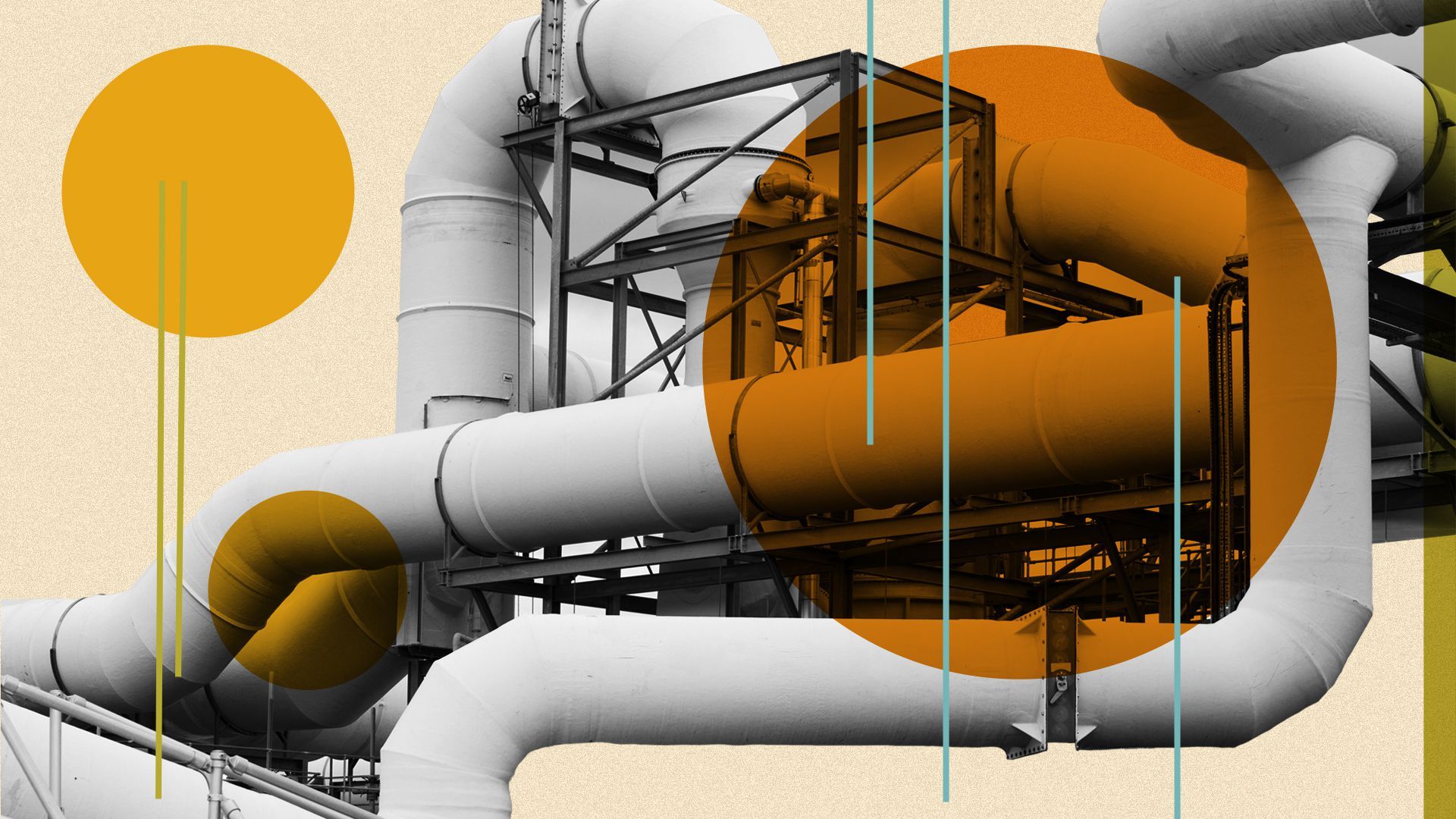Methane limits could be COP26's real legacy

- Andrew Freedman, author ofAxios Generate

Photo illustration: Shoshana Gordon/Axios. Photo: Ashley Cooper/Construction Photography/Avalon/Getty Images
On Tuesday, leaders of more than 90 countries will sign the U.S. and E.U.-sponsored Global Methane Pledge, which is designed to cut emissions of the powerful but short-lived planet-warming gas.
Why it matters: The significance of this pledge at the COP26 summit shouldn't be overlooked. Though it's less abundant than longer-lived carbon dioxide, methane is dozens of times more powerful at trapping heat in the atmosphere.
How it works: While efforts to cut carbon dioxide emissions require systemic change, such as retooling the way society generates and uses energy, methane is easier to target.
- It only requires actions like plugging leaks in oil and gas infrastructure and other human-caused sources such as agriculture and waste.
- The voluntary pledge commits countries to reducing methane emissions by 30% by 2030.
- Pledge signatories include 15 of the world’s top 30 methane emitters: the United States, European Union, Indonesia, Pakistan, Argentina, Mexico, Nigeria, Iraq, Vietnam and Canada, the White House announced in a fact sheet.
Details: Recent U.N. reports found that tackling methane emissions in addition to carbon dioxide would pay dividends in the near term.
- One report published in May by the U.N. Environment Program found that if global emissions of methane were slashed nearly in half by midcentury, it could prevent about 0.3°C (0.54°F) of warming.
The intrigue: President Biden's rollout of the methane pledge will be reinforced by action at home — unlike Biden's climate speech Monday at the summit, which was buffeted by Sen. Joe Manchin's (D-W.Va.) brushback against key pieces of his climate agenda in Congress.
Between the lines: On Tuesday, the EPA will propose new regulations targeting methane emissions from the oil and gas sector, including both existing and new sources of emissions.
- The EPA regulations will also require states to develop plans to cut emissions from existing sources, including about 300,000 oil and gas well sites.
- The methane rules would cut 41 million tons of methane emissions from 2023 to 2035, the EPA said in a statement. According to the agency, that’s more than the amount of carbon dioxide emitted from all U.S. passenger cars and commercial aircraft in 2019.
Context: In recent years, methane concentrations in the atmosphere have increased at a faster rate, making some scientists suspicious of possible links to the boom in hydraulic fracturing, or fracking, for natural gas.
- In addition, melting permafrost in the Far North can free up methane and other greenhouse gases that had been frozen for centuries in organic matter.
- Countries are targeting methane to slow the rate of climate change in the next one to two decades, which could avert crossing climate change "tipping points" such as the collapse of the West Antarctic Ice Sheet.
Yes, but: Cuts in carbon emissions will be necessary to stem warming in the long term, and those pledges have been far harder to elicit from world leaders so far.
What's next: Methane emissions will soon be tracked down to individual sources via satellites, aircraft and ground-based instruments, making it possible for observations to transform a voluntary initiative like the Global Methane Pledge into an eventual regulatory regime.
- For example, the Environmental Defense Fund is developing a methane-monitoring satellite with a planned launch in 2023, with other methane probes planned by other entities.
- The U.N. and European Union just rolled out an international methane emissions observatory at the G20 summit, with a plan to include satellite monitoring.